In this article
There may be many reasons for retailers who are already running Magento websites to think about migrating to a standard integration offered in the form of eCommerce – Magento.
For example:
- To be clear about what is supported and what is not
- To utilize all the available features
- To stay compatible with Magento version updates
- To stay compatible with LS Central version updates
- To reuse and take advantage of already done implementations
- To get unlimited support.
Retailers with an already running Magento website, regardless whether they have a custom integration with LS Central in place or not, may face some issues when they want to migrate to a standard integration provided by LS Retail.
This article lists all those blockers and issues that may occur during that whole process. It helps users to know beforehand what to expect and to make the appropriate decisions accordingly.
Catalog Data
- Product attributes
- Product attribute sets
- Product types
- Related, up-sells, and cross-sells products
- Managing price
- Categories
Product attributes
Magento allows retailers to define product attributes that could either be used to create variants or just to store useful information related to products. eCommerce – Magento creates attributes based on both attribute replication and extended variant value replication. So all those custom product attributes created in Magento that are either not available in LS Central or do not begin with ls_* prefix in Magento are not supported and are simply ignored during replication and synchronization. The image below shows all those product attributes created as part of replication by eCommerce – Magento.
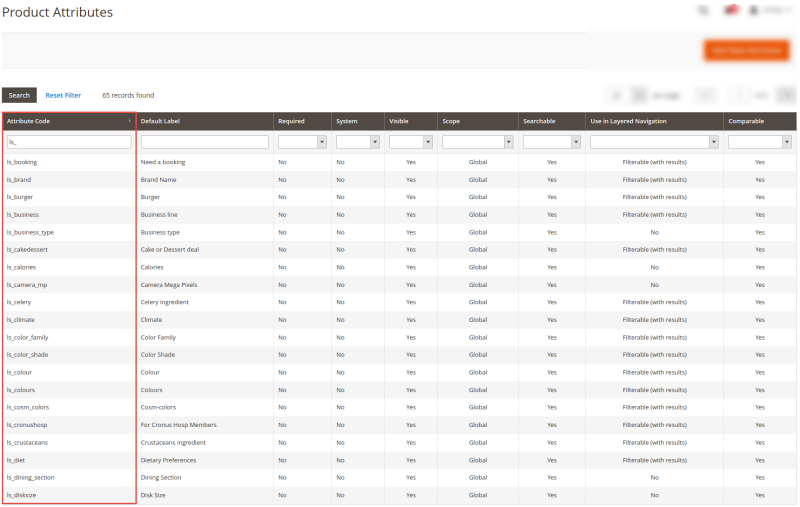
Product attribute sets
When you create a product, one of the first steps you do is to choose the attribute set that is used as a template for the product record. The attribute set determines the fields that are available during data entry, and the values that appear to the customer. eCommerce – Magento creates attribute sets based on either Item Category Code or Product Group and this behavior can be configured from the configurations as shown below.

So all those custom product attribute sets created in Magento that are either not available in LS Central or do not begin with ls_* prefix are not supported and are simply ignored during both replication and synchronization. The image below shows all the product attribute sets that are created as part of replication by eCommerce – Magento.
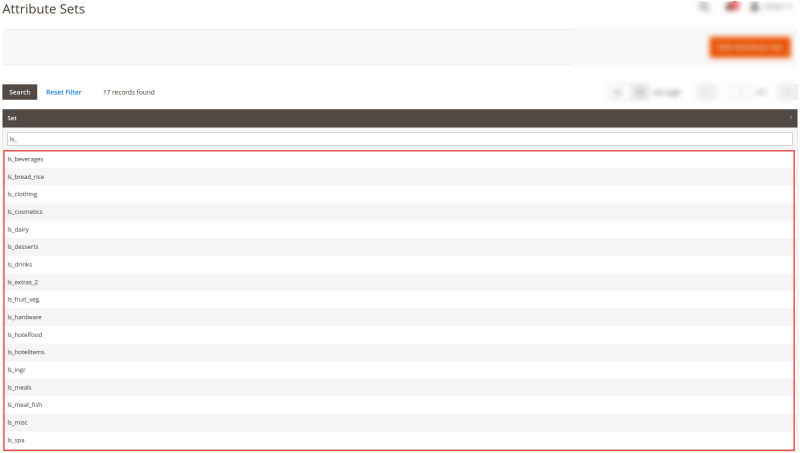
Product types
Magento supports multiple product types within the catalog that serve different industry needs, but currently eCommerce – Magento does not support all of them. The table shows supported and unsupported product types.
| Supported Types | Unsupported Types |
|---|---|
|
|
Related, up-sells, and cross-sells products
Magento lets retailers set up simple promotional blocks against each product that present a selection of additional products that might be of interest to the customer. These blocks, based on their type, are shown to the customer at different locations on the website. Although the retailer could still manage these blocks separately for each product in the Magento admin panel, the data will not be maintained as part of replication and synchronization.
Managing price
Magento supports a number of pricing options that you can use for promotions, or to meet the manufacturer's minimum advertised pricing requirements. You can make changes to product pricing on schedule, or by a price rule that is applied at the product level or in the shopping cart. eCommerce – Magento does not support all the pricing options. The table below shows supported and unsupported pricing options
| Supported Pricing Option | Unsupported Pricing Option |
|---|---|
|
|
eCommerce – Magento creates catalog price rules based on discount replication where currently only Type=”DiscOffer” is mapped into a catalog price rule. Each rule is synchronized based on the Rule Name which is the same as the OfferNo in LS Central. The images show an example of a catalog price rule.
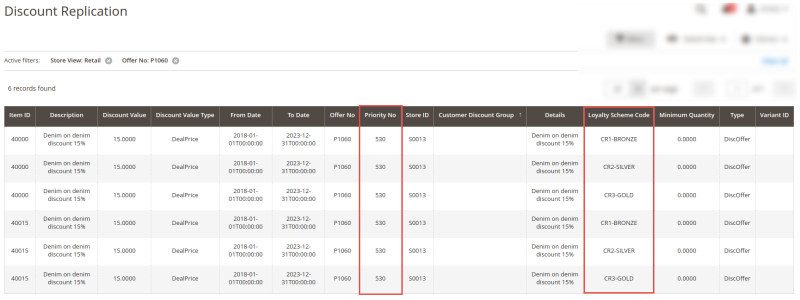
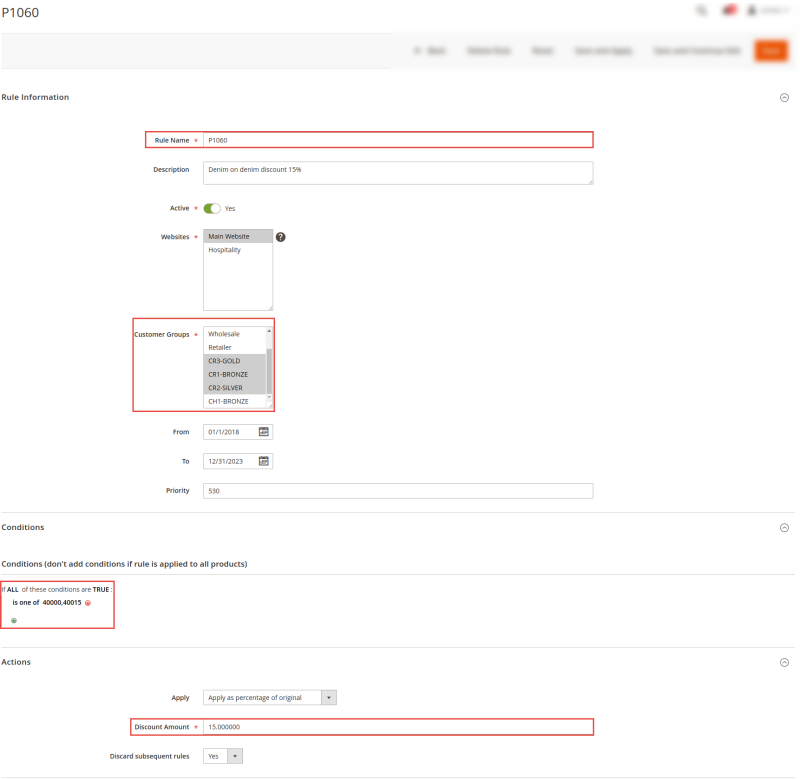
For all the other types of discounts that are created against an item in LS Central, including but not limited to Discount offer, mix and match, multibuy, and coupons, are shown in the product detail page as a drop-down list:
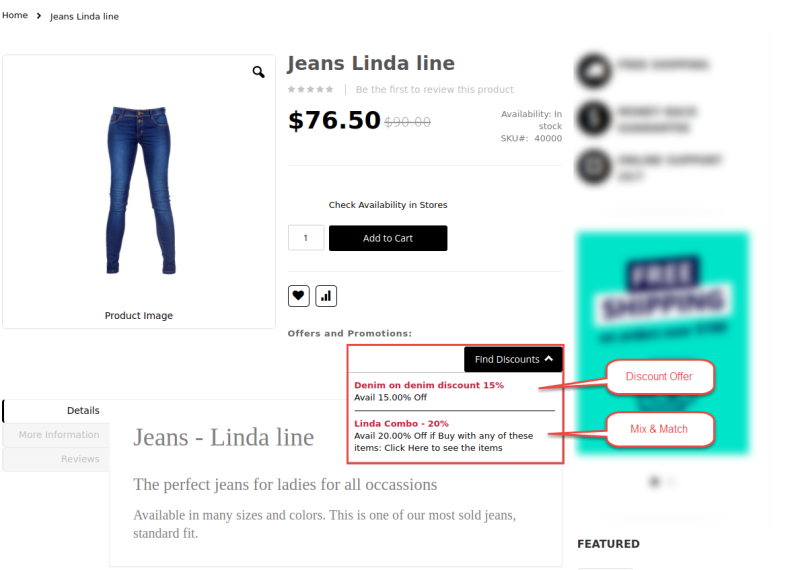
Categories
Before you add products to your catalog, you must establish the basic category structure of your catalog. Products may be assigned to zero or more categories. Categories are usually created in advance, before products are added to the catalog. However, you can also add categories “on the fly” while creating a product. Categories are normally used to make up the menu structure that is shown to the customer on the frontend. eCommerce – Magento creates categories on the basis of hierarchy nodes coming as part of replication from LS Central. Each category is mapped to a corresponding hierarchy node based on Nav ID as shown below:
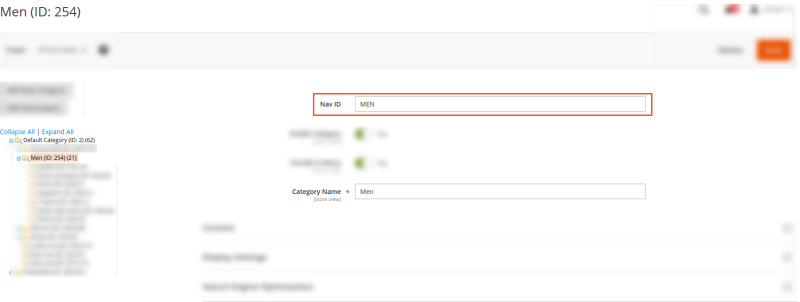
So therefore, all categories that do not have a Nav ID are not supported and are simply ignored during replication and synchronization.
Customer Data
Customer attributes
Customer attributes provide the information that is required to support the order, fulfillment, and customer management processes. eCommerce – Magento out of the box does not provide any support for the synchronization of customer attributes. There are some customer attributes that are populated on the fly, once a new customer account is created or updated in Magento as shown in the image:
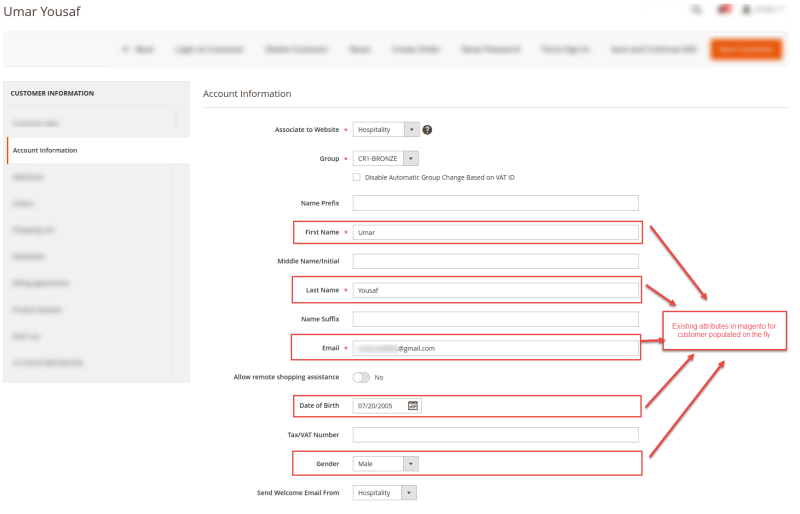

Customer address attributes
Custom address attributes can be set up, if you need to provide additional information, such as an optional email address, Skype account, alternate phone number, building, or county. eCommerce – Magento out of the box does not provide any support for populating or synchronizing customer address attributes. There are some customer address attributes that are populated on the fly, once a new customer account is created or updated in Magento as shown in the image:
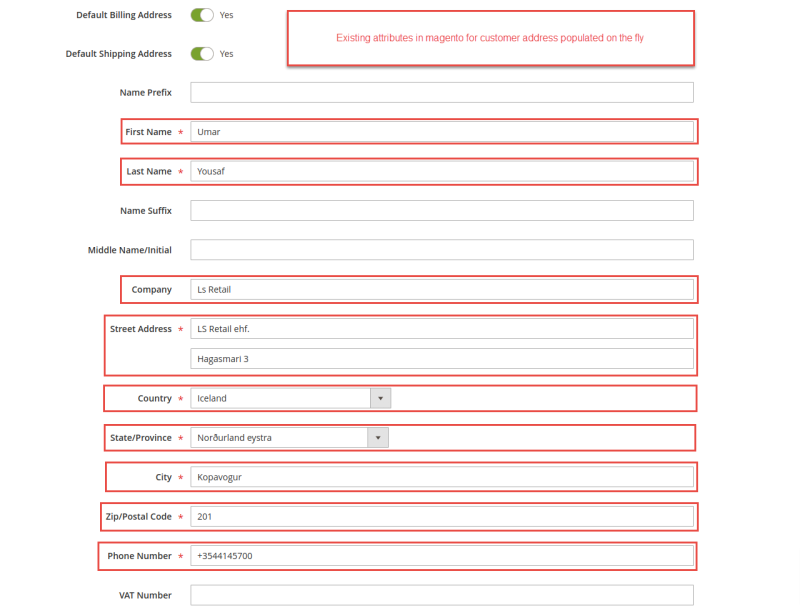
Customer groups
Customer groups determine which discounts are available and the tax class that is associated with the group. The default customer groups are General, Not Logged In, and Wholesale. eCommerce – Magento creates customer groups on the basis of member account scheme IDs. These groups are created on the fly during customer account creation, when the respective member account scheme ID received from LS Central does not exist as a customer group in Magento. So all those customer groups that are available in Magento but not created or added properly to any member account in LS Central will not be used.